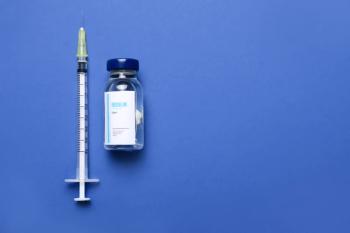
FDA approved more than 40 novel drugs in 2014
FDA approved 41 new molecular entities in 2014, including several for cancer, type 2 diabetes, and hepatitis C.
The Food and Drug Administration’s (FDA) Center for Drug Evaluation and Research approved 41 new molecular entities in 2014, including several for cancer, type 2 diabetes, hepatitis C, and other serious diseases.
John JenkinsIn its
The approved drugs include nine new medications for cancer, including Lynparza, Blincyto, Keytruda, Zydelig, and Sylvant; four drugs to treat type 2 diabetes, including Farxiga, Tanzeum, Jardiance, and Trulicity; two new drugs for hepatitis C – Viekira Pak and Harvoni; antibiotics to treat serious skin infections including Dalvance, Sivextro (oral and injection), and Orbactiv; and Zontivity for cardiovascular disease.
Notably, 17 (41%) of the new drugs were identified as “First-in-Class,” an indicator of a drug’s degree of innovation. “The total for First-in-Class approvals in 2014 approaches the highest yearly total of 20 reported in 2012,” Jenkins wrote.
In another major advancement, 17 (41%) of the novel new drugs were approved to treat rare or “orphan” diseases affecting 200,000 or fewer Americans. “This is the highest yearly total of such drugs ever – surpassing the previous high of 13 from 2012. These approvals are particularly signficiant because patients with rare diseases often have few or no drugs available to treat their conditions,” Jenkins wrote.
For example, Vimizim was approved to treat
Other novel new drug approvals in 2014 include: Belsomra for insomnia, Entyvio for
Quicker approval process
As a whole, the
Reviews of new drugs and biologics, which are performed under new drug applications (NDAs) or biologic license applications (BLAs) also saw an improvement in review time from 13 months in 2008 to 10 months in 2010, 2011, and 2012, the Regulatory Affairs Professional Society reported.
“Increased pressures for speedy access to breakthrough drugs and medical devices, and a focus on value in addition to medical benefit, are driving these changes,” PwC said in a statement about the report.
And Jenkins confirmed that the CDER has sped up its approval times for novel new drugs.
Forty-one percent of the novel new drugs approved in 2014 were designated as “fast track” and 22% were designated as “breakthrough therapy” medications. Sixty-one percent were designated for priority review because the CDER sees potential for providing a “signficiant advance in medical care and sets their review target to within six instead of the standard 10 months,” Jenkins wrote.
An additional 20% of the 41 novel drugs were approved under FDA’s Accelerated Approval program, which allows early approval of a drug for serious or life-threatening illness that offers a benefit over current treatments.
Plus, CDER approved 78% of the novel new drugs on the first cycle of review and 63% of the drugs were approved in the United States before they were approved in other countries.
Newsletter
Pharmacy practice is always changing. Stay ahead of the curve with the Drug Topics newsletter and get the latest drug information, industry trends, and patient care tips.

















































































































